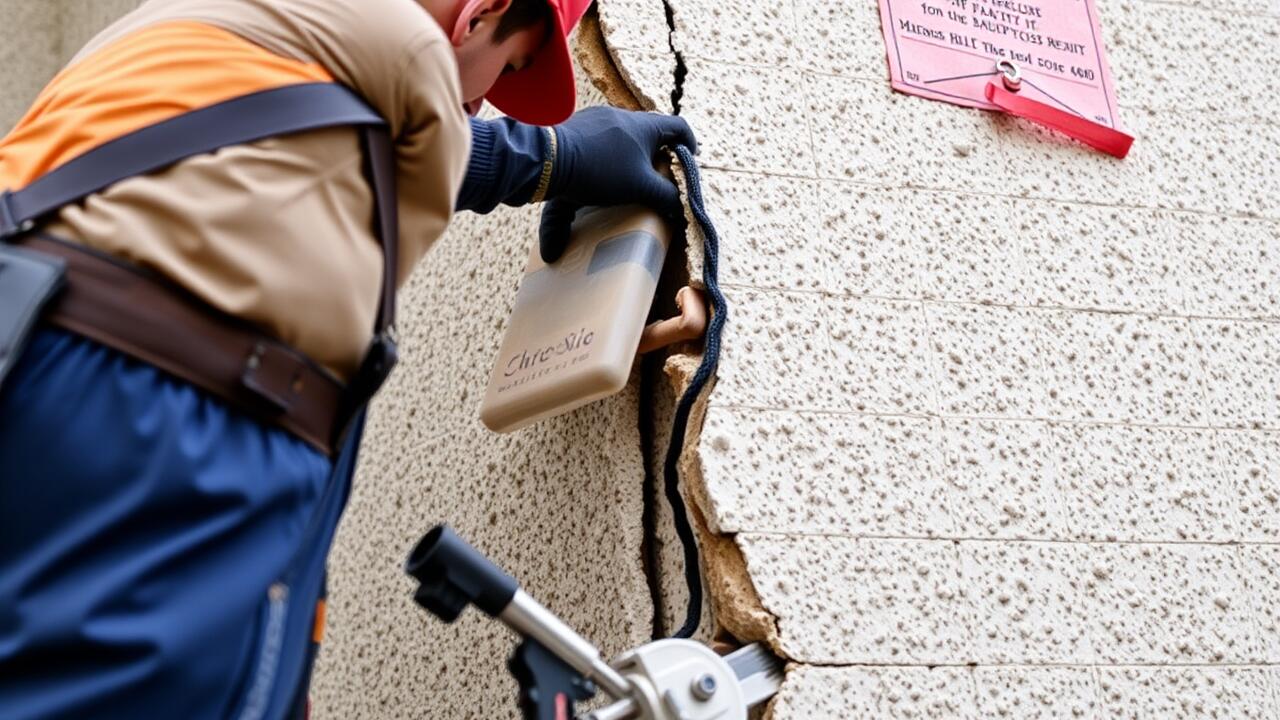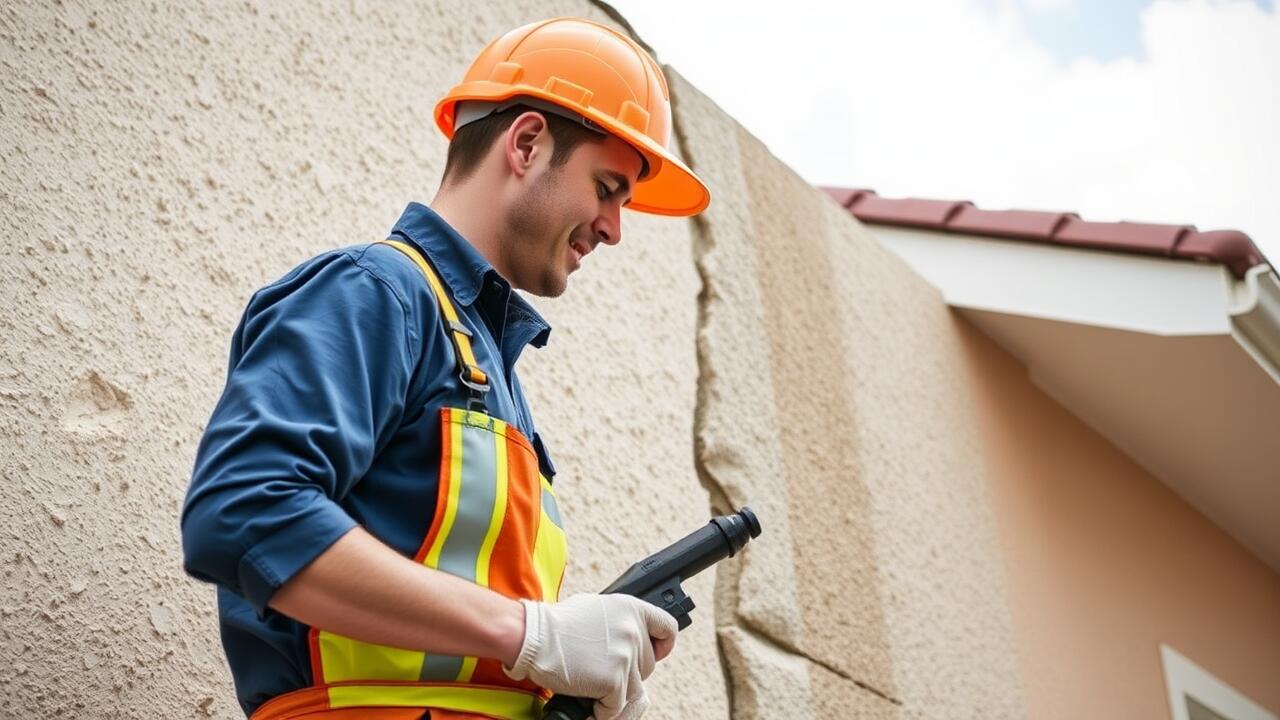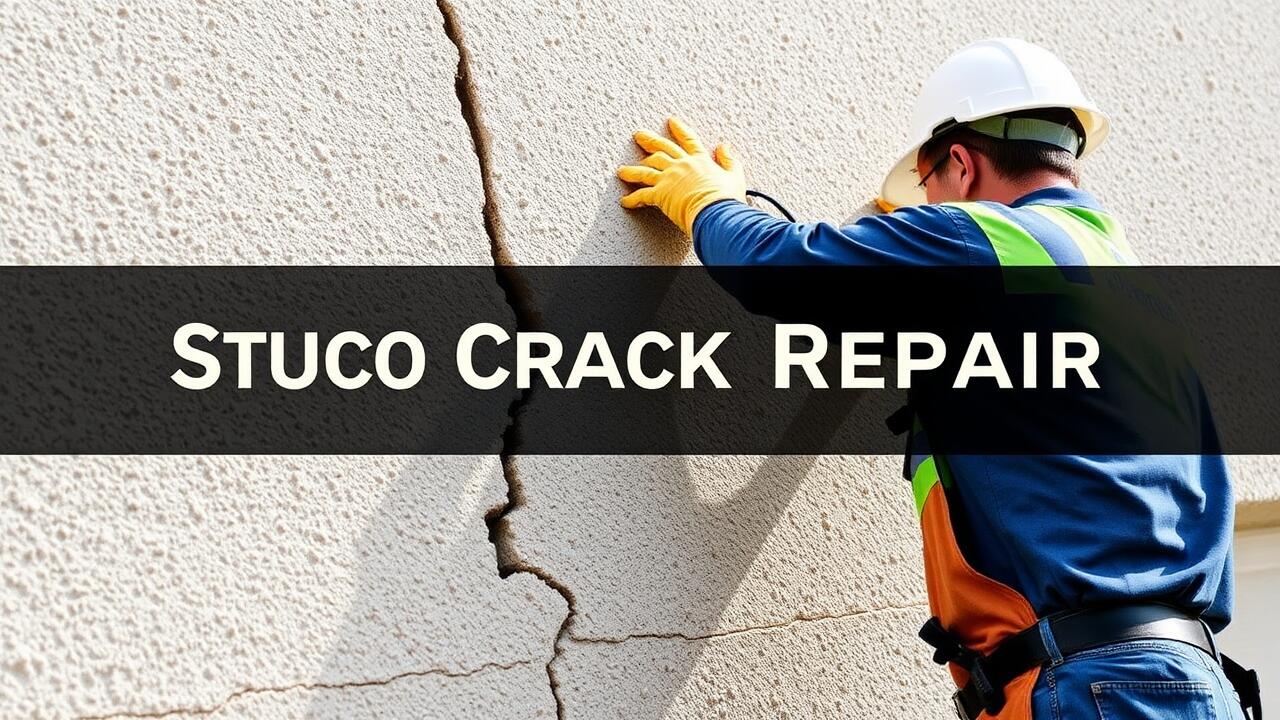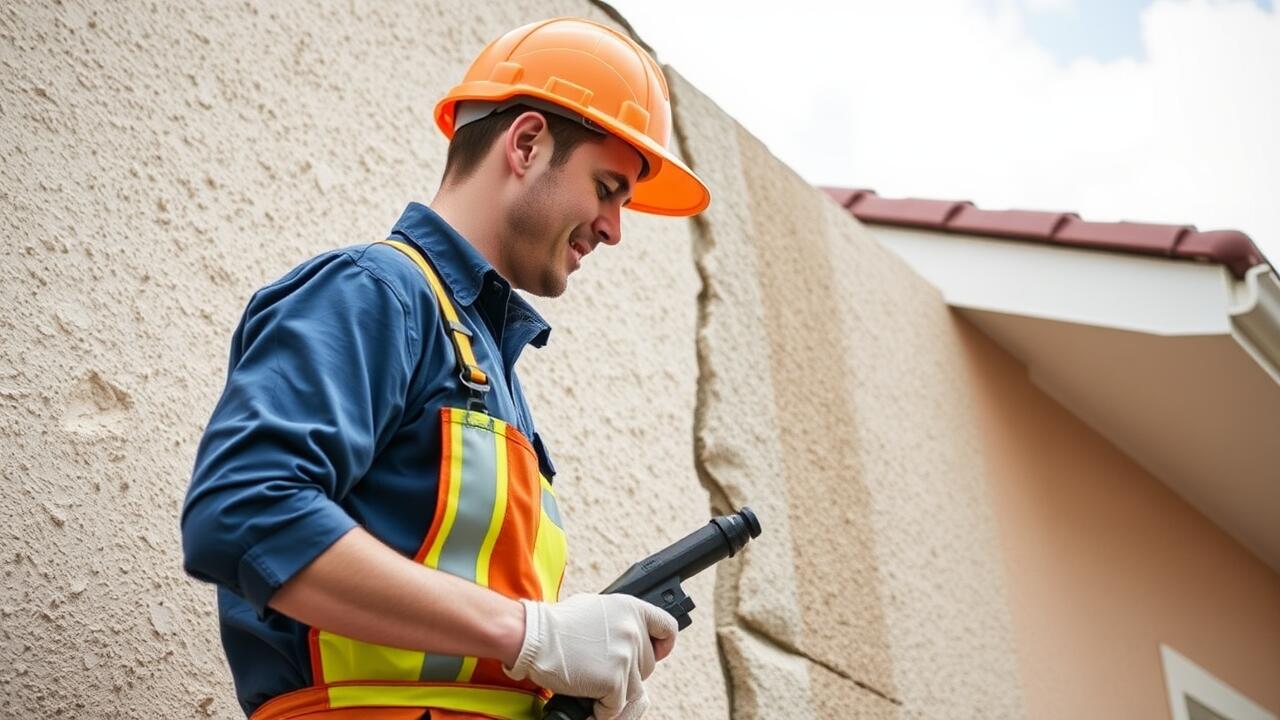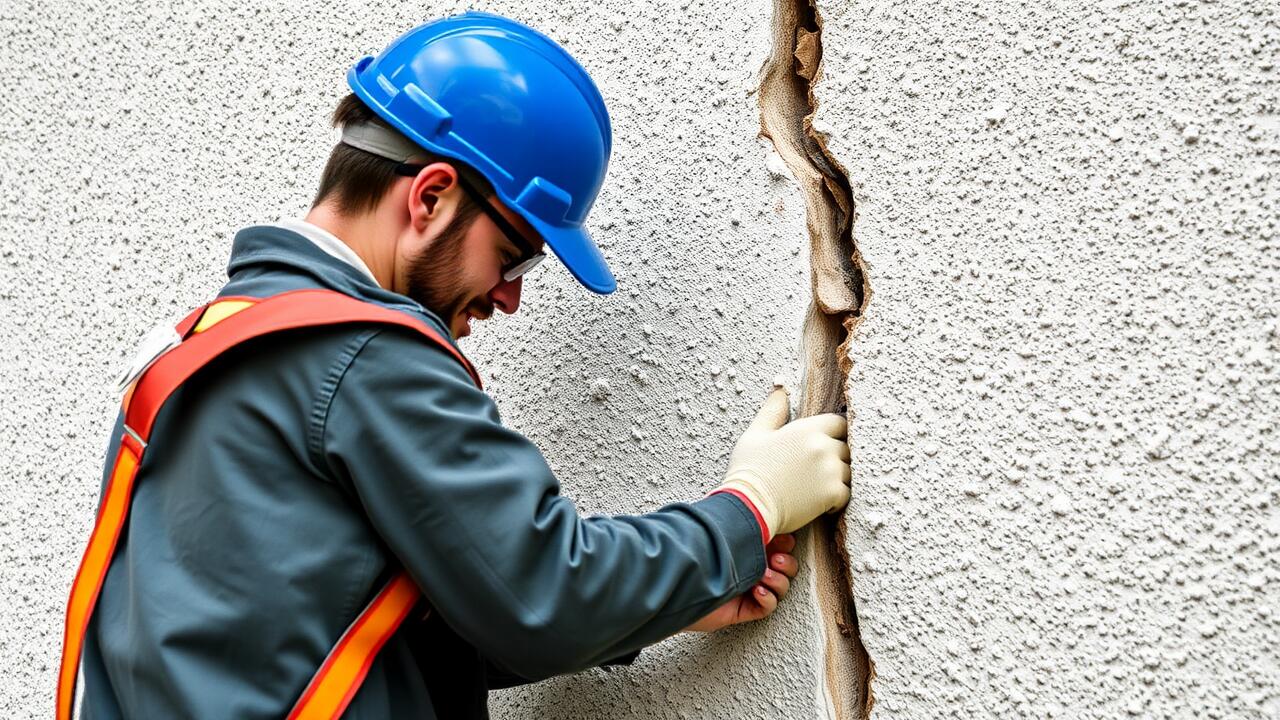
Mixing Techniques and Their Influence
The mixing techniques used in preparing stucco significantly affect its final quality. Achieving the right consistency is crucial to ensure that the mixture can adhere properly to the substrate. A mix that is either too dry or too wet can lead to various issues, including shrinkage cracks. The goal is to create a creamy, workable blend that allows for even distribution of materials without excess water that could compromise integrity. Experimenting with different mixing speeds and times can also influence the homogeneity of the batch, thus impacting the performance of the final application.
Proper mixing ratios play an essential role in preventing cracking during the drying process. Ratios of cement, sand, and water need to be carefully measured to ensure adequate strength and flexibility. An imbalanced mixture can cause one component to shrink at a different rate than the others, leading to stress that manifests as cracks. Homeowners seeking a solution often search for “Stucco Crack Repair near me” to address these issues promptly. Understanding how to mix stucco properly not only enhances its durability but also helps avoid expensive repairs later on.
Proper Mixing Ratios to Prevent Cracking
Achieving the right mixing ratios is crucial in preventing shrinkage cracks in fresh stucco. A standard mix often consists of portland cement, sand, and water. When these constituents are not proportioned correctly, the mixture can become too dry or too wet, leading to issues during the curing process. The ideal consistency allows for proper adhesion and flexibility, which can help reduce the likelihood of cracking as the stucco cures and shrinks.
It’s important to consult guidelines or professionals to determine the best ratios based on specific conditions and materials used. Homeowners seeking assistance should consider searching for "Stucco Crack Repair near me" to find local experts who can offer guidance or perform necessary repairs. Achieving the correct mix not only contributes to durability but also enhances the aesthetic appeal of the finish, resulting in a more robust application overall.
The Importance of Proper Application
Proper application of stucco is essential to avoid issues such as shrinkage cracks. When the stucco is applied unevenly or too thickly, it can lead to increased stress during the drying process. A consistent application thickness helps to ensure uniform curing, which mitigates the risk of cracks forming as the material dries. Moreover, attention to detail during the application phase can prevent problems that may arise later, reducing the need for costly repairs.
Utilizing the right techniques during application is crucial for long-lasting results. Techniques such as using a float to achieve an even surface or backfilling edges can significantly improve the bond of the stucco to the wall. Homeowners concerned about cracks may find themselves searching for "Stucco Crack Repair near me," highlighting the importance of getting the application process right the first time. Taking time to understand and implement proper methods can save both time and money in the long run.
Techniques for Even Thickness
Achieving an even thickness when applying stucco is essential to reduce the likelihood of shrinkage cracks. One effective technique is to use a straightedge or level to gauge the uniformity of the application as it progresses. This tool allows for easy identification of high spots or low areas, ensuring a consistent surface. Additionally, working in small sections can help maintain even thickness while allowing for adjustments before the material dries.
Another key aspect to maintaining a uniform thickness is to adhere to proper troweling techniques. The application should be smooth and deliberate, preventing excess material buildup in specific spots. Skilled use of the trowel not only contributes to a polished finish but also minimizes the risk of cracking. For those facing issues with cracks later on, searching for "Stucco Crack Repair near me" can provide local expertise to address any problems encountered.
Curing Methods to Minimize Cracking
Curing methods play a crucial role in minimizing shrinkage cracks in fresh stucco. After application, the stucco must remain moist to facilitate hydration in the cement. Techniques such as misting the surface or covering it with wet burlap can help maintain the necessary moisture levels. It's essential to avoid rapid drying caused by heat or wind, which can lead to uneven curing and increase the likelihood of cracks forming.
In addition to maintaining moisture, the timing of curing is equally important. Fresh stucco should be cured for a minimum of seven days to allow the material to achieve optimal strength. Employing effective curing strategies not only prevents cracks but also enhances the overall durability of the stucco. If cracks do develop despite these precautions, seeking professional help for stucco crack repair near me can ensure that repairs are conducted efficiently and effectively.
Effective Curing Strategies for Fresh Stucco
Effective curing strategies are essential for fresh stucco to achieve optimal strength and durability. One method involves keeping the surface moist for several days after application. This can be done by lightly misting the stucco with water a few times a day. It’s crucial to monitor the surface to prevent it from drying out too quickly, which could lead to shrinkage cracks. Additionally, covering the stucco with burlap or plastic sheeting can help retain moisture, particularly in hot or windy conditions.
Homeowners should also consider the ambient temperature and weather conditions during the curing process. Cooler and more humid environments allow for slower drying, reducing the likelihood of cracking. When conditions are less than ideal, using curing compounds can create a moisture-retaining film over the surface. For those who encounter cracks after the curing period, seeking "Stucco Crack Repair near me" can provide professional assistance to restore the integrity of the stucco.
FAQS
What are shrinkage cracks in fresh stucco?
Shrinkage cracks are small fissures that develop in freshly applied stucco as it dries and cures, primarily due to moisture loss and temperature changes.
How do mixing techniques affect shrinkage cracks in stucco?
Proper mixing techniques, including the correct water-to-cement ratio, help achieve a consistent and workable mixture, reducing the likelihood of shrinkage cracks.
Why is the thickness of the stucco layer important?
Even thickness is crucial because variations can lead to uneven drying, which increases the risk of cracking as some areas may shrink more than others.
What curing methods can help minimize shrinkage cracks in fresh stucco?
Effective curing strategies, such as misting with water, using curing compounds, or covering with wet burlap, help maintain moisture levels in the stucco, which can significantly reduce cracking.
Can shrinkage cracks in stucco be repaired?
Yes, shrinkage cracks can be repaired using appropriate patching compounds or stucco repair products, ensuring the surface is clean and well-prepared before application.
